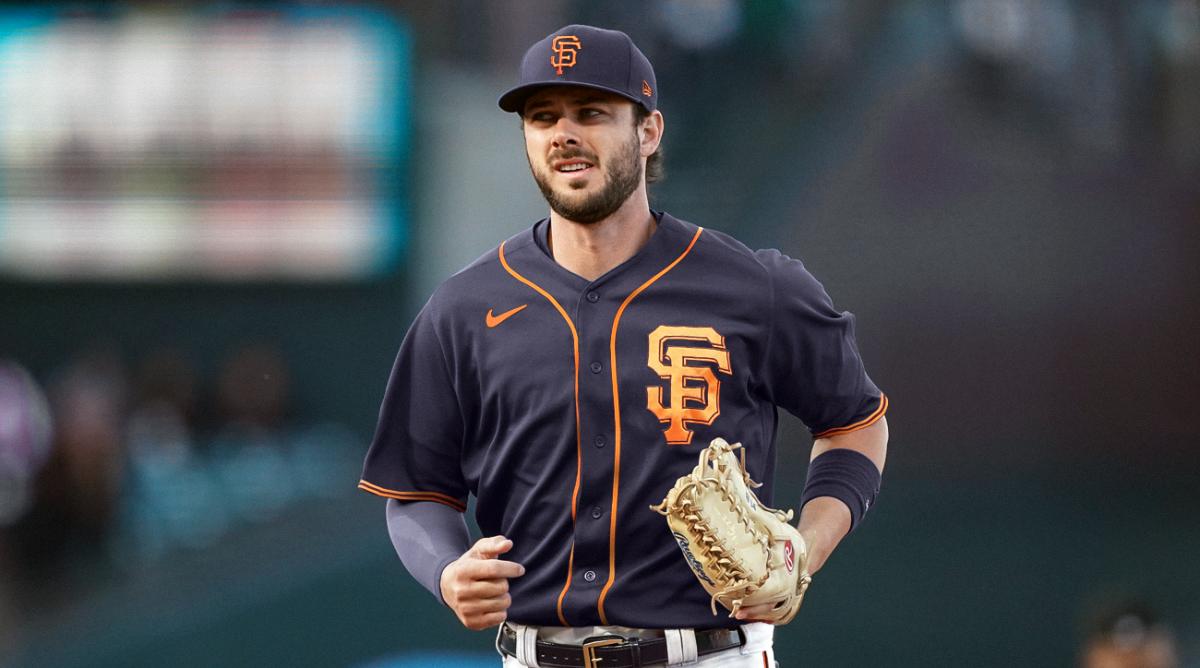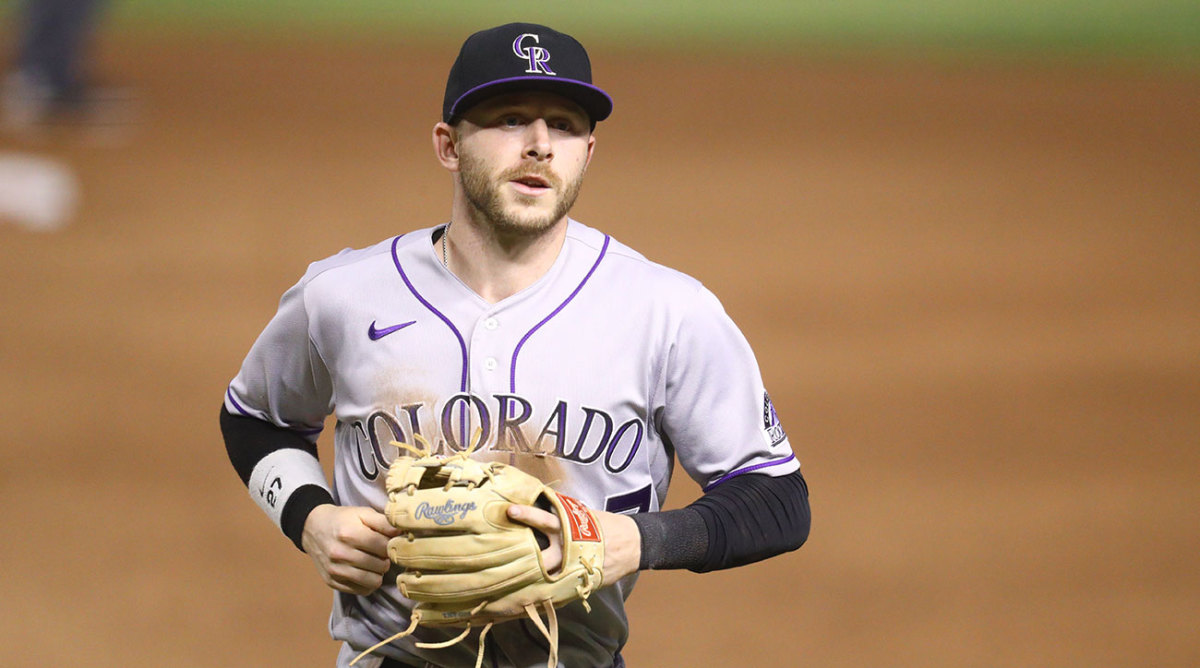MLB Trade Deadline Winners and Losers
Congratulations: You’ve made it through the MLB trade deadline in one piece. (Hopefully—that was a wild one.) After a frenzied afternoon of deals, here are the winners, losers, and teams in between.
Winners
Los Angeles Dodgers: The Dodgers haven't been in first place since April like many expected, but they have the National League's largest run differential and still looked like they could be the NL's best team with good health and the right breaks. And their deadline has solidified that. In need of rotation depth, they picked up the best rental starter available, Max Scherzer. (They added Danny Duffy, too, though he’s currently on the IL.) They didn’t need Trea Turner, but he provides an All-Star bat, speed, and defensive flexibility that should be much appreciated. While they had to move some of their top prospects to make it happen, their farm system is strong enough to handle that, and it seriously bolstered their chances of making it back to the World Series.
New York Yankees: Their biggest weakness was their lack of left-handed hitting, and they addressed that in a big way, emphasis on big. (It’s beefy boy season in the Bronx.) Adding Joey Gallo and Anthony Rizzo gives them not one but two lefties with great on-base skills who can mash. Gallo’s the stronger hitter at this point, and he’s also the one who’s under contract for a full year and a half, which is ideal for the Yankees. (Rizzo, an impending free agent, is a rental.) And the Yankees’ farm system depth means that they were able to get these deals done without parting with any of their top prospects. They also added some pitching depth in Andrew Heaney. It’s a bit surprising that they didn’t move first baseman Luke Voit—thereby clearing the way for Rizzo—but it’s hard to otherwise see any flaws in their deadline approach.
Chicago White Sox: Yes, they gave up one of their best young talents in Nick Madrigal, and that might be hard for some fans to swallow. But by acquiring Craig Kimbrel, they went from having one of baseball’s best bullpens to having baseball’s best bullpen, for both this season and next. Him and Liam Hendriks as part of the same relief corps? Opponents beware. (For more on just how to conceptualize the prospects in that trade, check out this great Twitter thread from Baseball America editor JJ Cooper.) The White Sox were already set up for success, with or without a prospect like Madrigal, and this only helps to secure their chances of making a seriously deep run in October.

San Francisco Giants: The Giants made the last big splash of the day. Right before 4 p.m. ET, they came through with a deal for Kris Bryant. That would be a win under any circumstances—one of the best deadline bats available, who fills a need in the infield, and who very well might re-sign this winter in San Francisco—but the fact that they didn’t have to part with any of their top prospect talent to do it? That’s impressive. The Giants’ package for Bryant was the lightest among those traded for big names on Friday: Alexander Canario, an outfielder, and Caleb Killian, a pitcher, were both top 20 prospects in the organization but not top 5, and that’s reportedly all. The Giants also added a nice bit of bullpen depth in reliever Tony Watson. That adds up to a deadline push that wasn’t quite as dramatic as the Dodgers’, but it was damn near close, and it should make for a tremendously fun race down the stretch in the NL West.
Atlanta Braves: The Braves’ deadline lacks the name-brand starpower of the other winners on this list. But they quietly had a very good day. They revamped their outfield: Adam Duvall, Jorge Soler and Eddie Rosario were all acquired Friday. (Plus, don’t forget Joc Pederson, who came over from the Cubs in a trade back on July 15.) They got the bullpen help they needed in the form of former Pirates closer Richard Rodriguez. There’s still no guarantee of a playoff spot—Ronald Acuña’s injury made the sort of hole that’s hard to fill—but given the chaotic nature of the NL East, there’s still a solid chance here, and a much better one today than there was yesterday. The Braves did an excellent job of putting themselves closer to contention without going all in and trading away pieces of their future. Compared to some of the blockbuster deals we saw on Friday, that’s not especially sexy, but it does deserve praise.
Drawing Even
New York Mets: This one felt like a bit of a toss-up. On the one hand, Javier Báez being added to a middle infield with Francisco Lindor is a win for everyone. On the other, New York could really have used more rotation depth than Rich Hill and Trevor Williams, particularly with the uncertain health of Jacob deGrom and Carlos Carrasco. (Like clockwork, deGrom had a setback announced just after the deadline.) It’s worth getting excited about the Mets’ addition of Báez—yes, it took a name-brand prospect, Pete Crow-Armstrong, but that’s a price worth paying. Yet this pitching staff could have used more help for a stretch run, and if the Mets really wanted to make a statement in their first deadline under owner Steve Cohen, another addition there would have been the way to do it.
Washington Nationals: Nationals GM Mike Rizzo knew he was going to sell, and he sold, well, everything: Max Scherzer, Trea Turner, Brad Hand, Daniel Hudson, Yan Gomes and Josh Harrison were all shipped out of D.C. The Nationals needed to rebuild a farm system that's grown thin in recent years, and they did that, stockpiling a bunch of prospects. But given some of the young names we saw move in later trades—Pete Crow-Armstrong, Nick Madrigal, Simeon Woods Richardson, and so on—it’s a bit striking the Nationals didn’t see an even bigger return for Scherzer and Turner. The sheer volume of moves did a lot to bolster their farm; the fact that they had a focus on talent close to the majors should be heartening to fans who don’t want to see a lengthy rebuild take up the prime years of Juan Soto. But based on how freely some teams ended up moving premium prospects, especially closer to the deadline, it’s fair to wonder if there couldn’t have been even more available to the Nationals.
San Diego Padres: This was not a bad deadline for the Padres. In a vacuum, it was good, even! They got second baseman Adam Frazier, reliever Daniel Hudson and outfielder Jake Marisnick, all of whom should help strengthen some weaknesses in San Diego. Alas, trade deadlines aren’t judged in a vacuum, and next to the big swings from the Dodgers and Giants, there just wasn’t enough action here to call this a win for the Padres—especially since they weren’t able to secure another starter after reportedly being in on Scherzer, José Berríos and Kyle Gibson.
Chicago Cubs: Putting aside all the ways in which dismantling a core like this will always feel like a bit of a loss—has it really been just five years since 2016?—there were some big victories here for the Cubs. They landed much lauded prospect Nick Madrigal in exchange for Craig Kimbrel, former first-round draft pick Pete Crow Amstrong in exchange for Javier Báez and Trevor Williams, and the respectable pairing of Kevin Alcántara and Alexander Vizcaíno in exchange for Anthony Rizzo. They didn’t take any half-measures here, and they got a nice foundation of young talent in return. But when it came to Kris Bryant—arguably their biggest trade chip!—the return was fairly lackluster, which makes it more difficult to see this deadline as a clear win for the Cubs.
Minnesota Twins: The Twins had one big win on Friday. They were going to need a serious package to make it worthwhile to move ace José Berríos—and that’s just what they got. In exchange for the 27-year-old starter, Minnesota got two of Toronto’s top prospects, pitcher Simeon Woods Richardson and up-the-middle talent Austin Martin. (Woods Richardson is currently playing for Team USA in the Olympics.) They’re both fairly close to major-league-ready and should be able to make an impact rather soon—good news for a team with a solid core that can win in 2022 with players like Byron Buxton, Max Kepler and Josh Donaldson, all of whom they chose to keep this week. And a focus on talent close to the majors seemed to be a theme: Minnesota kept a similar strategy with the players it got in exchange for Nelson Cruz and J.A. Happ. But it failed to deal several pending free agents who could have done even more to improve their long-term outlook—no takers for Michael Pineda? (Every contender needs rotation depth!) What about Andrelton Simmons? No one wanted to take a flier on the track record of Alex Colomé? The Twins still succeeded on their biggest move of the day with Berríos. But the fact that they didn’t move some of these other players—Pineda’s presence here is especially baffling—knocks them down from winning the deadline to drawing even.
Oakland A’s: Oakland’s deadline wasn’t particularly flashy, but it included some fun moves, most notably getting Starling Marte from the Marlins. They also added reliever Andrew Chafin, utilityman Josh Harrison and catcher Yan Gomes. There weren’t any theatrics here, but there was enough to give them a boost to ensure they stay competitive in this playoff race. (They entered Friday with a grasp on the second wild-card spot, 3.5 games ahead of their nearest threat, the Yankees.)
Losers
Boston Red Sox: Yes, Boston has been in first place for most of the season. But it still could have used some activity at this deadline—help at first base, the bullpen or extra rotation depth in case Chris Sale doesn’t have the smoothest return from the IL?—and didn’t do much. The Red Sox instead settled for picking up outfielder Kyle Schwarber, who’s currently injured, and reliever Hansel Robles, who’s having a lackluster season. Meanwhile, the Yankees, Rays and Blue Jays added to their rosters, ensuring this division will look much tougher the rest of the way. That’s not a disaster for the Red Sox. (While the Rays are just 1.5 games behind them, everyone else is much further back.) But it sure should make them uncomfortable, and depending on how this one plays out, it could easily end up looking like a missed opportunity.
Seattle Mariners: Seattle’s playoff hopes never looked especially good—this is a cardboard castle built on one-run wins—but its lack of deadline action still might have felt frustrating. The Mariners moved closer Kendall Graveman earlier this week in a trade that reportedly infuriated the clubhouse and promptly replaced him with Diego Castillo. Then they did … nothing. Which, sure, it wouldn’t have been smart to go in on rentals. But for players with a year and a half of team control, or more, this could have been a great chance to consider going in, and fans have every right to feel disappointed (again).

Colorado Rockies: There are other losers on this list. There are none who lost as profoundly, confusingly and stupidly as Colorado. The Rockies were widely expected to move Trevor Story, who, frankly, should have been moved this past winter. They could have moved Daniel Bard. They could have moved Jon Gray! And instead they did… nothing. There were several teams who could have done more. But there were none whose inaction was as utterly baffling as the Rockies. (Yes, Story is confused, too.)
More MLB Trade Deadline Coverage:
• Breaking Down a Busy Trade Deadline Day
• Dodgers Swing All-Time for Scherzer, Turner
• Yankees Boost Lackluster Offense With Anthony Rizzo Trade
• In Joey Gallo Trade, Yankees Bet the Farm on Another Slugger
